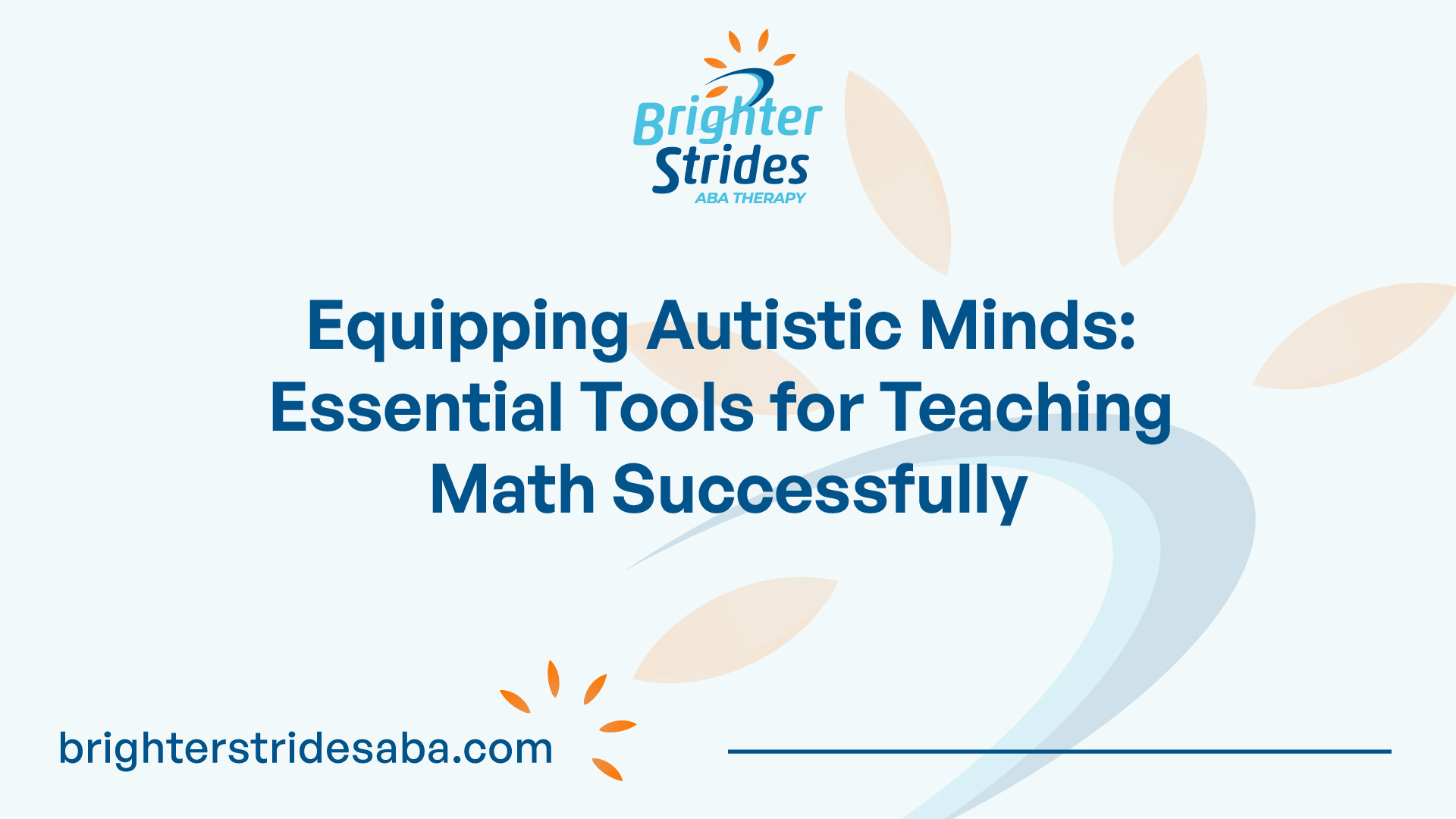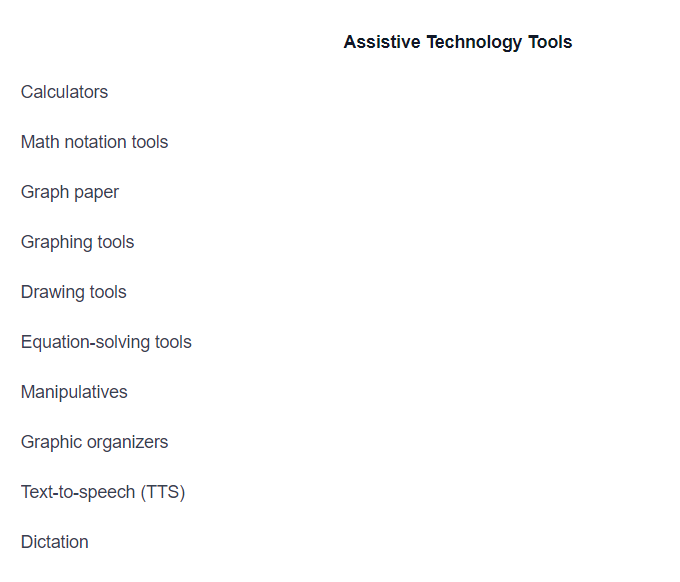Teaching Math to Students with Autism
When it comes to teaching math to students with autism, it is essential to understand their individual learning needs. Autism Spectrum Disorder (ASD) encompasses a wide range of abilities and challenges, making it crucial to tailor teaching methods to each student’s unique strengths and weaknesses. Understanding the child on various levels is essential in determining the best teaching method for them.

Understanding Individual Learning Needs
Each student with autism has their own way of learning, and it is important to recognize and accommodate their specific needs. Some students may excel in visual learning, while others may benefit from hands-on experiences or auditory instruction. By assessing and identifying individual learning needs, educators can modify their teaching approaches to create a supportive and inclusive learning environment.
Benefits of One-on-One Tutoring
One-on-one tutoring sessions have proven to be beneficial for students with autism when learning math. These sessions provide personalized assistance and guidance tailored to individual needs. One-on-one tutoring allows educators to focus on the specific challenges faced by each student and adapt teaching methods accordingly. The individualized attention and support offered in these sessions can significantly enhance a student’s understanding and progress in math.
By understanding the individual learning needs of students with autism and providing personalized support through one-on-one tutoring, educators can create a nurturing environment that fosters math learning and growth.
Strategies for Teaching Math to Students with Autism
Teaching math to students with autism requires effective strategies that cater to their unique learning needs. By utilizing specific approaches, educators can create a supportive and engaging environment for math instruction. Three key strategies for teaching math to students with autism include utilizing visual representation and manipulatives, incorporating real-world examples, and establishing a positive reinforcement system within a structured environment.
Utilizing Visual Representation and Manipulatives
Visual representation and the use of manipulatives can greatly benefit students with autism by providing a tangible representation of math problems and concepts. This method mimics the use of physical manipulatives and helps students see and understand math concepts more clearly. By using visual aids such as charts, diagrams, and graphs, educators can make abstract concepts more concrete and accessible.
According to Time4Learning, visual representation and grouping in teaching math can provide students with autism a tangible representation of the problems they are working on. This approach allows students to visualize and manipulate mathematical ideas, promoting a deeper understanding.
Incorporating hands-on manipulatives, such as blocks or counters, further enhances the learning experience for students with autism. These concrete materials provide tangible representations of mathematical concepts, making them more accessible and engaging. Visual supports and manipulatives help students make connections, solidify their understanding, and apply math concepts in real-life situations, as stated by Yellow Bus.
Incorporating Real-World Examples
Incorporating real-world examples into math lessons is an effective strategy for teaching students with autism. By presenting math concepts within practical contexts, students can see the relevance and application of mathematical principles in their daily lives. Real-world examples enhance problem-solving skills by providing students with relevant problems to solve, encouraging the application of mathematical knowledge.
According to Cross River Therapy, using real-world examples helps students with autism understand mathematical concepts in a concrete and tangible way. Educators can engage students by relating math problems to situations they encounter outside of the classroom. For instance, using money or measuring ingredients for a recipe can help students understand the practical applications of addition, subtraction, and measurement.
Positive Reinforcement and Structured Environment
Implementing positive reinforcement strategies, such as rewards and praise, can motivate students with autism and improve their engagement and performance in math tasks. According to Full Sped Ahead, positive reinforcement encourages students to actively participate in math lessons and fosters a positive attitude towards learning.
Creating a structured and predictable learning environment is essential for students with autism. Clear routines, expectations, and visual schedules provide students with a sense of security and help them understand and navigate math lessons more effectively. By establishing a structured environment, educators can reduce anxiety and promote a focused learning environment for students with autism, as highlighted by Full Sped Ahead.
By utilizing visual representation and manipulatives, incorporating real-world examples, and implementing positive reinforcement within a structured environment, educators can effectively teach math to students with autism. These strategies cater to their unique learning needs, promoting understanding, engagement, and the application of mathematical concepts in meaningful ways.
Selecting the Right Math Curriculum
When it comes to teaching math to students with autism, selecting the right math curriculum is essential for effective learning. By employing research-backed strategies and considering specific factors, educators can make the teaching and learning process less stressful and more enjoyable for both students and teachers.
Considerations for Choosing a Math Curriculum
When evaluating math curricula for students with autism, it’s important to consider several key factors. These considerations can help ensure that the chosen curriculum meets the unique needs of students on the autism spectrum. Questions to ask when selecting a math curriculum include:
- Does the curriculum offer visual elements? Visual aids and representations can greatly benefit students with autism, as they often excel in visual learning. Visual elements such as graphs, charts, and diagrams can enhance comprehension and engagement.
- Is the curriculum interactive? Interactive features and activities in a math curriculum can promote student engagement and facilitate a hands-on learning experience. Interactive components allow students to actively participate and apply their knowledge in practical ways.
- Does the curriculum support a multi-grade level approach? Students with autism may have varying abilities in different math concepts. A curriculum that accommodates multiple grade levels simultaneously can provide opportunities for individualized instruction and ensure students progress at their own pace.
Time4Learning: An Autism-Friendly Online Curriculum
One math curriculum that caters to the unique needs of students with autism is Time4Learning. Recognized as a Certified Autism Resource by IBCCES, Time4Learning offers an online curriculum that engages students through interactive lessons at their own pace and across multiple grade levels simultaneously. The visually appealing nature of the curriculum captivates students’ attention and motivates them to learn.
Time4Learning provides a comprehensive math curriculum that covers a wide range of concepts and skills. The curriculum utilizes a combination of instructional videos, interactive activities, and practice exercises to reinforce learning. Students can access the curriculum from any device with internet access, allowing for flexibility in learning environments.
Parents of students using Time4Learning have access to answer keys for tests and quizzes, enabling them to support their mathematically inclined children effectively. This partnership between parents and the curriculum helps create a cohesive learning experience that extends beyond the classroom.
By considering the unique needs of students with autism and selecting a math curriculum that aligns with those needs, educators can provide a supportive and effective learning environment. Time4Learning’s autism-friendly online curriculum offers a valuable resource for teachers and parents seeking to enhance math instruction for students on the autism spectrum.
Adapting Instruction for Students with Autism
Teaching math to students with autism requires specialized approaches to accommodate their unique learning needs. By adapting instruction, educators can create a supportive and inclusive learning environment that promotes understanding and success. Here are three essential strategies for adapting math instruction for students with autism:
Breaking Down Math Concepts
Breaking down complex math concepts into smaller, more manageable components is a fundamental strategy in teaching students with autism. This approach allows them to grasp the material better and build upon it gradually. By presenting information in a structured and systematic manner, educators can help students understand the underlying principles and processes involved in mathematical concepts. Breaking down math concepts into smaller steps also aids in promoting success and preventing overwhelming feelings that may hinder learning.
Individualized Instruction and Differentiation
Individualized instruction is crucial when teaching math to students with autism. Each student on the autism spectrum has unique strengths, challenges, and learning styles. By assessing and understanding individual needs, educators can modify the curriculum and instruction to address these specific requirements. This may involve providing additional support, adjusting the pace of instruction, incorporating visual aids, or utilizing assistive technology. Differentiating instruction ensures that students receive personalized attention and support, enabling them to engage with the material more effectively.
Engaging Multiple Senses
Engaging multiple senses during math instruction can significantly enhance learning for students with autism. Multi-sensory approaches involve incorporating visual, auditory, and tactile elements to reinforce understanding and memory retention. For example, educators can use visual aids, such as charts, diagrams, and manipulatives, to provide a concrete representation of abstract math concepts. Auditory cues, such as verbal explanations, can complement visual information. Additionally, hands-on activities and interactive materials can promote engagement and active participation in the learning process.
By breaking down math concepts, providing individualized instruction, and engaging multiple senses, educators can effectively adapt math instruction for students with autism. Creating a structured learning environment, utilizing visual supports, and incorporating positive reinforcement strategies are also important elements to consider. These strategies promote a positive and inclusive learning experience, empowering students with autism to develop their mathematical skills and reach their full potential.
The Role of Assistive Technology in Math Instruction
Assistive technology (AT) plays a crucial role in supporting students with autism in their math instruction. These tools provide a range of resources and aids that can help students overcome challenges and enhance their learning experience. Let’s explore the assistive technology tools available for math and the benefits they offer.
Assistive Technology Tools for Math
A variety of assistive technology tools are available to support students with autism in their math learning journey. These tools encompass a range of devices, software, and resources that cater to different needs. Some common examples of assistive technology tools for math include:

These tools can aid students with different math difficulties, providing them with the necessary support to excel in their math skills. For instance, graph paper, graphing tools, drawing tools, and equation-solving tools can be particularly beneficial for students studying algebra, calculus, geometry, or trigonometry.
Benefits of Assistive Technology in Math Learning
The use of assistive technology tools in math instruction offers several benefits for students with autism. These tools can:
- Enhance understanding and comprehension: Assistive technology tools provide visual aids, manipulatives, and interactive features that can help students grasp mathematical concepts more easily. This visual representation of abstract concepts can enhance understanding and comprehension.
- Promote independence and confidence: By utilizing assistive technology tools, students can work on math problems independently, reducing their reliance on constant supervision. This independence fosters confidence and empowers students to tackle math challenges on their own.
- Facilitate problem-solving: Assistive technology tools offer features like equation-solving tools and graphing capabilities, which can assist students in solving complex mathematical problems. These tools streamline the problem-solving process and allow students to focus on the underlying concepts.
- Provide accessibility: Assistive technology tools cater to diverse learning needs by providing accessibility features such as text-to-speech (TTS) and dictation. These features help students with reading difficulties or motor skill challenges to access math content more effectively.
- Improve math skills: Contrary to concerns that assistive technology may hinder learning, experts suggest that using math AT tools, such as calculators, can actually help students improve their math skills, as long as they are not overused. These tools can provide the necessary support and scaffolding for students to develop a deeper understanding of mathematical concepts.
Assistive technology tools for math are available from various sources, including school supply stores for traditional tools like graph paper, calculators, and rulers. More advanced digital tools can be accessed through desktop computers, laptops, mobile devices, and apps. It’s essential to explore and utilize these tools to create an inclusive and supportive learning environment for students with autism in their math instruction.
Enhancing Math Instruction for Students with Autism
When it comes to teaching math to students with autism, enhancing the learning experience can greatly benefit their understanding and engagement. By incorporating specific strategies and approaches, educators can create an environment that supports their unique needs. In this section, we will explore three key aspects of enhancing math instruction for students with autism: a structured learning environment, visual supports and hands-on activities, and personalized instruction and support.
Structured Learning Environment
Creating a structured and predictable learning environment with clear routines and expectations can significantly benefit students with autism. This provides them with a sense of security and facilitates their understanding and participation in math lessons. Establishing clear routines, providing visual schedules, and incorporating visual supports can help create predictability and reduce anxiety in the classroom.
By breaking down math concepts into smaller, manageable steps, educators can help students grasp one concept at a time and build upon their understanding incrementally. This structured approach allows students to progress at their own pace and build confidence in their mathematical abilities.
Visual Supports and Hands-On Activities
Visual aids and hands-on activities have been found to be particularly effective for teaching math to students with autism. These tools help students understand mathematical concepts in a concrete and tangible way. For instance, manipulatives like blocks or counters can assist in visualizing addition and subtraction problems.
Incorporating visual supports, such as charts, diagrams, and visual schedules, can provide a concrete representation of abstract math concepts, making them easier to grasp. Hands-on activities engage multiple senses and help students make connections, solidify their understanding, and apply math concepts in real-life situations.
Personalized Instruction and Support
Individualized instruction tailored to the unique strengths and challenges of each student is a crucial aspect of teaching math to students with autism. By customizing instruction, educators can address individual learning needs and help students make progress. This may involve modifying the curriculum, providing additional support, and utilizing differentiated instruction strategies.
Assistive technology tools, such as digital math manipulatives and interactive math games and apps, can play a significant role in enhancing the learning experience for students with autism. These tools provide visual and interactive support, making mathematical concepts more accessible and engaging. They can assist students in breaking down complex problems, fostering confidence and independence in their mathematical abilities.
By creating a structured learning environment, incorporating visual supports and hands-on activities, and providing personalized instruction and support, educators can enhance math instruction for students with autism. These strategies help promote understanding, engagement, and success in the learning process, allowing students to build strong mathematical foundations.
References
- https://www.time4learning.com/homeschooling/special-needs/autism/teaching-math.html
- https://www.adinaaba.com/post/teaching-math-to-students-with-autism
- https://thirdspacelearning.com/us/blog/autism-math/
- https://www.fullspedahead.com/adapting-math-concepts/
- https://www.yellowbusaba.com/post/teaching-math-to-students-with-autism
- https://www.understood.org/en/articles/assistive-technology-for-math
- https://www.crossrivertherapy.com/autism/teaching-math

 We've just released an article!
Check out our blog!
We've just released an article!
Check out our blog!



